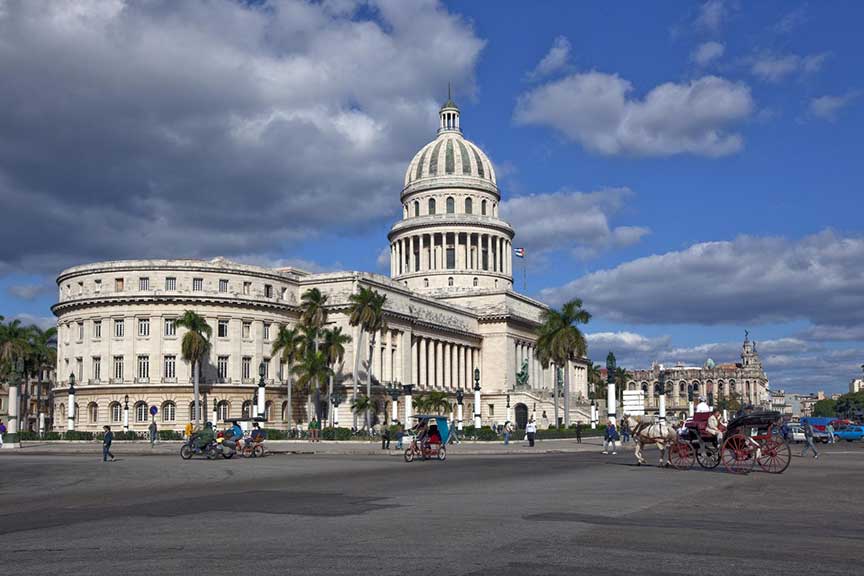1959 -

Havana
On January 1st,1959 Fidel Castro marched into Havana after Cuban dictator Batista had fled. Castro, who had led the successful revolution against Batista, was widely welcomed-- even by the U.S. Castro soon signed a friendship treaty with the Soviet Union. He also confiscated large agrarian holdings. As far as the United States was concerned, these two actions transformed Castro from a freedom fighter into a Communist.
On January 1, 1959, Fidel Castro and his revolutionary forces marched triumphantly into Havana, signaling the culmination of a successful insurgency against the Cuban dictator Fulgencio Batista. Batista had fled the country the previous night, unable to withstand the mounting pressure from Castro’s guerrilla warfare and widespread popular support for the revolution. Castro, who had been leading the revolutionary movement since the early 1950s, was widely celebrated across Cuba for his role in overthrowing the oppressive Batista regime, which had been marked by corruption, human rights abuses, and deep social inequality.
In the immediate aftermath of Batista's departure, Castro was perceived positively not only within Cuba but also internationally, including by the United States. The initial reception of Castro by the U.S. was cautiously optimistic, as he was seen as a liberator who could bring democratic reforms and stability to Cuba. However, this perception began to shift dramatically within the first year of his rule. Castro's actions quickly began to alienate the United States and other Western nations.
One of Castro’s early and decisive moves was to sign a friendship treaty with the Soviet Union. This alliance with the USSR was a significant geopolitical shift, occurring at the height of the Cold War when tensions between the United States and the Soviet Union were at their peak. The treaty indicated a clear alignment with the Soviet bloc, which alarmed the United States. Furthermore, Castro began to implement radical agrarian reforms, which included the confiscation of large agrarian holdings. Many of these properties were owned by foreign (particularly American) investors and wealthy Cuban elites. The expropriation of these lands without compensation was seen as a direct threat to foreign investments and economic interests.
These two actions – the alignment with the Soviet Union and the confiscation of agrarian holdings – were pivotal in transforming Castro’s image in the eyes of the United States from that of a freedom fighter to a Communist adversary. The U.S. government, initially hopeful for a democratic outcome in Cuba, now viewed Castro's regime as a potential extension of Soviet influence in the Western Hemisphere. This shift in perception laid the groundwork for a prolonged period of tension and hostility between the United States and Cuba.
As Castro continued to consolidate power, he implemented further socialist policies, nationalizing key industries and reducing American economic influence on the island. These actions prompted the U.S. to impose economic sanctions and eventually led to the severing of diplomatic relations. The relationship between the two countries deteriorated rapidly, culminating in events such as the Bay of Pigs invasion in 1961 and the Cuban Missile Crisis in 1962, which brought the world to the brink of nuclear war.
In summary, Fidel Castro's march into Havana on January 1, 1959, marked the beginning of a new era for Cuba. While initially welcomed by many, including the United States, his subsequent alignment with the Soviet Union and the confiscation of foreign-owned properties transformed him into a symbol of Communist expansion in the Western Hemisphere.
 >
>